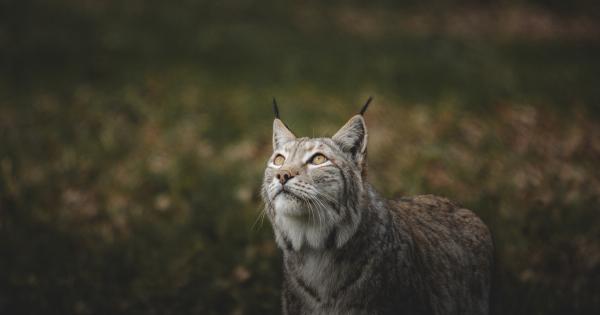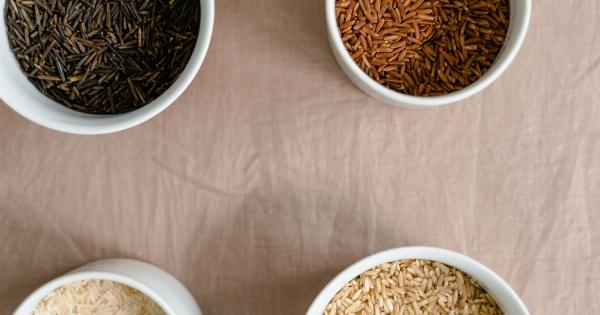When it comes to diet and nutrition, there are numerous approaches people experiment with to achieve a healthy and balanced lifestyle. From veganism to paleo diets, the options seem endless.
However, there is one unconventional diet that may pique your curiosity – the diet of a mighty tiger. Tigers, being apex predators, follow a unique diet that consists mainly of meat. In this article, we will delve into the intriguing world of the tiger’s diet, its potential benefits, and the implications of adopting such a diet for humans.
The Nutritional Value of a Tiger’s Diet
Tigers are carnivorous animals, meaning they primarily consume meat. Their diet consists of various types of prey, including deer, boars, and even smaller animals like rabbits.
This meat-centric diet provides them with a significant amount of protein and fat, which are essential macronutrients for their survival and physical well-being.
The meat consumed by tigers is a rich source of highly digestible protein. Protein is crucial for muscle development, tissue repair, and overall growth.
The amino acids present in meat are also necessary for the production of enzymes, hormones, and antibodies, thus ensuring a strong immune system.
Tiger diets are relatively low in carbohydrates as they mainly rely on animal flesh rather than plant-based sources.
However, when tigers do consume carbohydrates, it is usually in the form of undigested plant matter present in the stomachs of herbivorous prey. These carbohydrates provide some energy, although tigers primarily depend on fats for their energy needs.
Tigers also obtain essential vitamins and minerals from their diet. The liver and organ meats they consume are rich in Vitamin A, which promotes healthy vision, immune system functioning, and cell growth.
Additionally, they obtain minerals like calcium, phosphorus, and iron from consuming bones and blood of their prey.
How Does the Tiger Diet Compare to Human Diets?
While the tiger diet may provide tigers with the necessary nutrients, it is essential to analyze how this compares to the dietary requirements of humans.
Humans have evolved to be omnivores, capable of deriving nutrients from both plant and animal sources. Our dietary needs differ from those of tigers due to various physiological factors.
Unlike tigers, humans have a more diverse set of dietary requirements and can easily obtain protein from plant-based sources as well.
While animal sources do provide complete proteins, many plant-based foods, such as legumes, tofu, and quinoa, offer excellent alternatives. Moreover, a diet rich in fruits, vegetables, and whole grains can provide the necessary vitamins, minerals, and fiber for optimal human health.
When comparing the tiger’s high-protein, high-fat diet to the modern human diet, it is clear that tigers consume significantly more saturated fat and cholesterol.
Excessive consumption of saturated fats has been linked to an increased risk of heart disease and other health issues. Humans are advised to consume fats in moderation and opt for healthy sources such as nuts, seeds, and olive oil.
Furthermore, a tiger’s diet lacks dietary fiber, which is essential for maintaining a healthy digestive system and preventing constipation.
Plant-based diets, on the other hand, are rich in fiber, aiding digestion and reducing the risk of various gastrointestinal disorders.
Potential Benefits of a Tiger-like Diet for Humans
Although the tiger’s diet may not be suitable as a whole for human consumption, some elements can be incorporated into a balanced human diet. Here are a few potential benefits of adopting certain aspects of a tiger-like diet:.
High Protein Intake
Protein is vital for maintaining muscle mass, supporting weight loss, and promoting satiety. Incorporating lean sources of animal or plant-based proteins can be advantageous for those looking to improve their muscle tone or achieve weight loss goals.
Rich Source of Omega-3 Fatty Acids
Tigers primarily consume prey that roams freely in the wild, resulting in a diet rich in omega-3 fatty acids. These fatty acids are essential for brain health, reducing inflammation, and promoting heart health.
Including sources of omega-3 fatty acids like salmon, sardines, or flaxseeds in the diet can provide similar benefits to humans.
Reduced Intake of Processed Foods
The tiger diet is free from processed foods, which are often high in added sugars, unhealthy fats, and artificial ingredients.
By emulating a more natural, whole-food approach like a tiger’s diet, humans can reduce their consumption of processed foods and improve overall health.
Dangers and Ethical Considerations
Although specific elements of a tiger-like diet can be beneficial, there are inherent dangers and ethical considerations involved in adopting such a diet:.
High Risk of Nutrient Imbalances
While a tiger’s diet is sufficient for their specific nutritional needs, adopting this diet as a human raises the risk of nutrient deficiencies or imbalances.
Tigers have different metabolic processes, digestive systems, and specific nutrient requirements. Humans may not derive the same benefits and could suffer from malnourishment or excess intake of certain nutrients.
Sustainability and Environmental Impact
The tiger’s diet, being primarily meat-based, raises concerns about sustainability and environmental impact.
The amount of land required to rear animals for slaughter, coupled with the greenhouse gas emissions associated with the meat industry, makes this type of diet less environmentally friendly than plant-based alternatives.
Ethical Concerns about Animal Welfare
Adopting a diet that relies heavily on consuming meat raises ethical issues concerning animal welfare.
The tiger’s diet involves hunting and killing animals, which may be incompatible with the moral principles of many individuals who prefer a compassionate and cruelty-free lifestyle.
Health Risks Associated with High Fat and Cholesterol Intake
Tigers consume considerably more fat and cholesterol compared to the dietary recommendations for humans. Such high intake can contribute to cardiovascular diseases, obesity, and other health issues.
Striking a balance between fats, proteins, and carbohydrates that aligns with human nutritional requirements is crucial for maintaining optimal health.
Final Thoughts
The diet of a tiger, with its emphasis on meat consumption, provides essential nutrients needed for a tiger’s survival and growth.
However, replicating this diet for humans is not recommended due to various physiological and ethical considerations. Instead, humans can find a balance by incorporating the positive aspects of a tiger-like diet, such as high-quality proteins and omega-3 fatty acids, into a well-rounded, plant-based diet.
Remember, consulting with a healthcare professional or a registered dietitian is crucial when making any significant changes to your diet to ensure you meet your individual nutritional needs safely and sustainably.




























